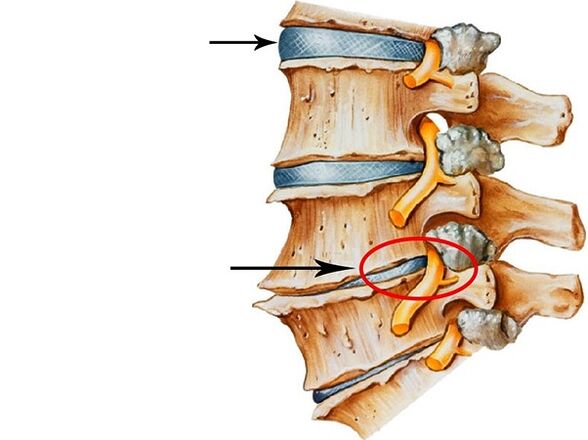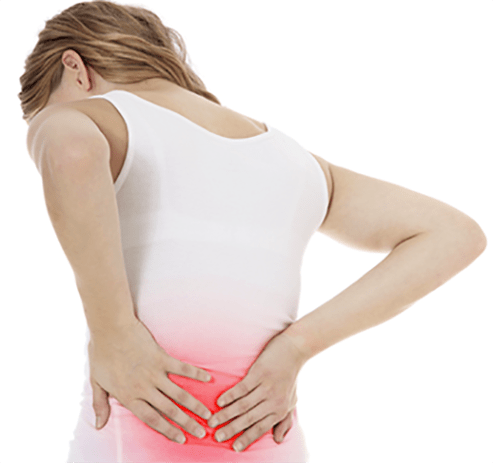Osteochondrosis is one of the most common pathologies in the spine.In this disease, the cartilage tissue of the spine and intervertebral discs is affected.Osteochondrosis has most often affected the lumbar region, since the maximum load when walking, sitting, running and other activities is due.
If the treatment does not begin over time, the disease can lead to radiculitis, Schwandebralernie, Lumbago, Ishias, disability.
Development levels
The disease is usually divided into several stages:
- 1. stage- There are minor changes in the intervertebral discs, the spine is not deformed, one person has slight pain in the lower back.
- Level 2- The pain in the affected area becomes stronger, violations in the intervertebral discs against the intervertebral discs become clearer.
- Level 3- There are intermediate branders, the spine is deformed.The patient has severe pain in the affected area.
- 4. Level- It becomes difficult for one person to go and make movements.Pain occurs with slight movement.At this stage, the patient usually receives a disability.

Causes
In most cases, people whose work or activity are associated with physical exertion and large stress in the lumbar department are: builders, makers, pensioners and athletes are subject to osteochondrosis.In addition, pathology can occur among teachers, cashiers and office workers because they spend most of the time in a seated position.
There are many factors that influence the occurrence of osteochondrosis:
- Lack of physical exertion, carries out a seated lifestyle.
- Strong load in the lumbar cone region.
- Diseases of the joints and spine.
- Injuries to the lumbar spine.
- Flat feet or club foot.
- Obesity.
- Poster disorders, Stoop.
- Scoliosis or kyphosis.
- Long -term hypothermia.
- Age -related changes in the spine.
- Genetic predisposition.
- Some internal diseases of cardiovascular, nervous and endocrine systems.
- Improper nutrition.
Symptoms
The main signs of an osteochondrosis of the lower back are:
- Saving painful pain in the lower back, sometimes give up in the leg and intensify when you carry out movement, sneeze, cough, etc.
- Constant tension of the back muscles.
- The inability to straighten your back after a long stay in the same position.
- Unpleasant sensations when tilting or expanding the back.
- Lights in the lower back.
- Loss of sensitivity in buttocks, hips.
- Goosebumps, a feeling of tingling in the legs.
- Daubiness of the legs and feet.
- The constant cold of the feet and the feeling of the cold in the legs.
- Varicose veins.
- Violation of potency in men.
- Irregular menstruation in women.

The main symptom for pathology is the pain in which you urgently need to consult a doctor.
Diagnosis
The diagnosis of osteochondrosis begins with a thorough examination of the patient and the accumulation of an anamnesis - the doctor asks the patient about osteochondrosis in the genus, chronic diseases, lifestyle, activity, joint diseases and spine.
In addition, the specialist stipulates instrumental diagnostic methods, including:
- X -Ray of the lumbar region- Allows you to recognize the presence of pathology and the degree of vertebral damage.
- Computer tomography (CT)- A more precise research method with which you can determine the damage to the intervertebral discs, the degree of change, the degree of deformation of the spine.
- MRI- Allow you to thoroughly examine the intervertebral discs between the spine, to obtain information about minor diseases in the spine, in difficult cases or if the image of the test using the CT or X beam examination is unclear.
- Myelography- A kind of diagnosis in which a contrast medium is used to recognize intermediate vertebrae hernia.
Based on the data, the specialist determines the degree of pathology and prescribes the necessary treatment.
Treatment
The treatment of osteochondrosis is carried out comprehensively.The necessary medication and procedures are only prescribed individually by a doctor.
First of all, the patient is prescribed a number of medication based on NSAIDS -not steroidal anti -inflammatory medication that can relieve inflammation and eliminate pain in the affected area.Chondroprotectors are also prescribed - medicines that stop the process of destroying cartilage and feeding of cartilage tissue.Vitamins that improve the state of the entire organism are prescribed as additional medication.
For many diseases of the spine, including osteochondrosis, physiotherapy is prescribed.The processes can improve blood flow to the lesion, relieve the muscles through the tension, remove pain and inflammation.In the case of osteochondrosis, electrophoresis, acupuncture, magnetic therapy and other procedures are prescribed.
The patient is also prescribed a massage, mud baths or hydrotherapy with which it is possible to relieve the tension and tiredness of the muscles, to relax and to improve blood flow.Muddy mud baths can eliminate the inflammatory process.
In the first stages of the disease, training therapy is prescribed - a color gymnastics, the performance of which rests the mobility of the spine to strengthen the muscles of the back.This type of treatment is not used in 3 and 4 stages of osteochondrosis.
Nutrition is very important when treating the disease - it is necessary to include fruits, vegetables, porridge in the nutritional products that are rich in minerals.Make sure to eat low -fat meat because it is rich in protein - it will be most useful to eat chicken or turkey meat.It will be useful to use fermented dairy products.It is recommended to reduce the amount of fat, sharp, smoked, fried dishes.It is important to watch drinking mode - make sure that you drink at least 1 liter of clean water a day.
In the case of osteochondrosis of the lumbar region, the treatment in a sanatorium will be useful, where experts treat the disease in the complex during the patient's entire stay and the patient is constantly under the supervision of the doctors.
If conservative treatment methods do not help, the surgical treatment method is used.During operation, affected bikes or cartilage are replaced by an implant.And if there is a intermediate writing, it will be removed.
prevention
- Limit the load on the lower back.
- Do sports, do morning exercises.
- Eat properly.
- Try to prevent lumbar spine injuries.
- Avoid hypothermia of the lower back.
- Change the position of the body more often with a long seat, rise regularly and do simple exercises for warm -up or just go.
- Save the correct posture, don't bend down.
- Wear special orthopedic insoles in the fold or flat feet that reduce the load on the spine.

















































